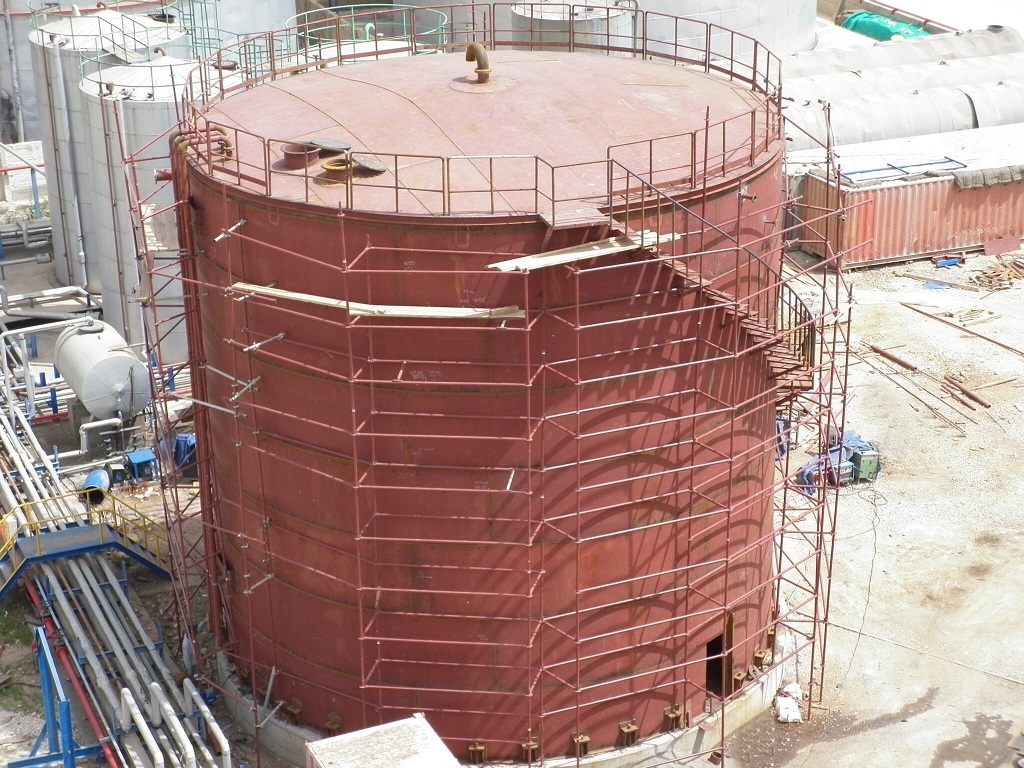Floating Roof Tank is a kind of an atmospheric storage tank used for storing large amounts of petroleum products like condensate and crude oil. In additionally we can inform a floating roof tank is a storage tank with a flat roof that floats on the surface of the oil thus reducing evaporation to the minimum.
It contains a cylindrical steel shell with an open top that is equipped with a roof which floats on the surface of the stored liquid.
Floating roof is the core component of floating roof storage tank, which is divided into two types:
- Internal floating roof
- External floating roof
Although external floating roofs are preferred, internal floating roofs are also useful.
Internal floating roof tank:
Internal floating roof tank is a kind of environmental protection and economy storage tank, in which equipped with a floating roof, floating up and down with the increase or decrease of the stored liquid, generally, floating roofs are made of lightweight materials, such as aluminium and stainless steel.
The top of internal floating roof tank is a combination of dome roof and floating roof, the exterior is a dome and the interior is a floating roof. Under the case of same seal condition, internal floating roof can reduce the evaporation loss of oil product.
Internal floating roof tank advantages:
- There are Obvious Environmental protection and economy benefits
- Internal floating roof floats on the liquid surface, so that the liquid has no evaporation space, reducing the evaporation loss to 85%~90%
- The air and stored liquid are separated by floating deck, reducing air pollution as well as the risk of fire and explosion.
- Reduce the corrosion of storage tank roof and wall, prolong the service life of storage tank
- Reduce the air pollution, easy to ensure the quality of liquid stored in the storage tank
- Internal floating roof tank is especially suitable for the storage of high-rest gasoline, jet fuel, toxic petroleum and chemical products
External Floating Roof:
The floating roof of external floating roof tank is a top cover floats on the surface of liquid stored in the storage tank, it floats up and down with the input and output of the liquid.
Generally, external floating roof tank is used for the storage of volatile petroleum products, such as crude oil, fuel oil, kerosene, etc.
Similar with internal floating roof tank, external floating roof tank has various of types:
- Steel tray type
- Floating cabin type
- Single deck type
- Double deck type
- Aluminium alloy sandwich structure
External floating roof tank features:
- Single deck floating roof tank costs less than double deck, thereby the single deck floating roof tank is more popular.
- Floating roof support legs are usually flexible and suspends in the liquid.
- In most cases, there is a central drain system on the floating roof, so that to guarantee the snow and rain water can be discharged smoothly, avoiding the deck sinking accident.
- There is a 100mm-500mm gap between the external floating roof tank shell and external floating roof, so that to prevent the storage tank from chuck during the operation process.
- External floating roof tank adopts the rim seal system, which can greatly reduce the rim evaporation.
- External floating roof tank is suitable for large crude oil storage tanks.
External roof tanks are usually installed for environmental or economic reasons to limit product loss and reduce the likelihood of emission of volatile organic compounds (VOCs) and other potential air pollutants.
Environmental safety is essential and Internal Floating Roof Tanks ensure this. Designed to regulate gas venting, Internal Floating Roofs allow explosive gases to vent into the atmosphere in a safe way.
Deha Tech is a leading supplier of Internal and External Floating Roof Tanks and offers effective solutions for controlling vapour emissions.
We provide Internal and External Floating Roof Tanks design, manufacturing, assembly and after sales support for all types of chemical and petroleum tanks according to the highest industry standards.

